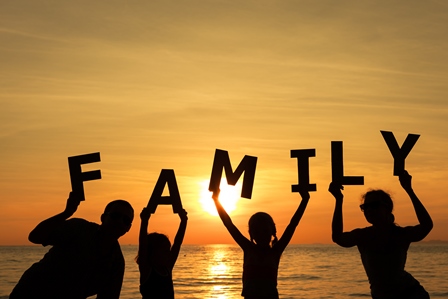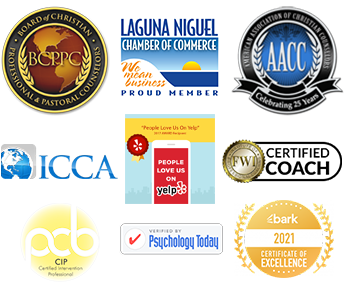By Randy Moraitis, MA, CIP, BCPC
My job as a coach, counselor and interventionist is to help my clients live more focused and healthier lives. We can get so busy with work, relationships and responsibilities that we can easily lose focus and feel frustrated.
One tool that I teach my clients (and do myself) is the Daily Top 3 List. Done consistently, this tool can lead to increased focus, success, and happiness.
There are two parts to the Daily Top 3 List–it is actually two separate top 3 lists. One is a task list and the other is a gratitude list.
Top 3 Tasks
Let’s look at the task list first. Have you ever written out a long to-do list then get stressed out about all the things you have to do? I have. Or do you have long to-do lists where you never finished crossing off all the tasks on the list? I do.
Long to-do lists really only serve to increase our anxiety so stop using them today! Instead carefully think through what are the top 3 most important tasks for you to complete each day that will keep you moving towards your main goals and priorities in life.
Imagine it is the end of the day and you’re laying your head on your pillow. What are the top 3 tasks you would need to have accomplished to feel successful about your day so you can relax and get a good night’s sleep? These are the items that must be on your daily top 3 tasks list. Write them down then do them!
Top 3 Gratitudes
The second part of the Daily Top 3 List is a gratitude list. Research is clear that when we live with an attitude of gratitude we are less stressed, less depressed and have happier relationships. Research also shows that cardiac patients who kept gratitude journals showed improvements in their heart health.
Gratitude is good for mind, body and spirit. With all the busyness in our lives and the craziness in the world we can lose sight of living in gratitude, so we must be intentional about gratitude.
Every morning stop to write down the 3 things for which you are most grateful. It could be family, friends, health–whatever you are truly grateful for–write them down. (And unlike the daily task list, you are welcome to write down more than 3 items on your gratitude list.)
Your Next Step
There you have it–to live a healthier, happier and more focused life, take a few moments every morning to write out your top 3 tasks of the day and your top 3 gratitudes of the day.
I hope this coaching tip helps you move towards becoming the very best version of you!
I would love to hear from you. You can contact me at randy@randymoraitis.com or 949-303-8264. Check out my coaching/counseling/intervention website www.randymoraitis.com.
About Randy Moraitis
Randy is married to Kim and they live in Laguna Niguel. Together they have a blended family of five adult children and three beautiful grandchildren. (If you don’t believe Randy he will gladly show you pictures!)
Randy is a Certified Intervention Professional (CIP) and expert in helping families affected by addiction and/or mental health issues. He is a Board Certified Pastoral Counselor and is both licensed and ordained as a pastoral counselor. He has five professional coaching certifications and loves working with clients on executive coaching, life coaching, wellness coaching and recovery coaching. Randy has a master’s degree with emphasis in theology and counseling, a bachelors degree in management and leadership, and a certificate in health and fitness with emphasis in exercise physiology and sports psychology from UC Irvine. He has been helping groups, individuals and families get mentally, physically and spiritually healthy in Orange County for over 25 years.








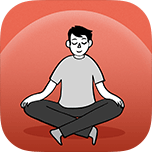 1. Stop, Breathe & Think–This is a great, free app that has a 5 star rating and is a Webby Award Winner. I love this app and use it myself for relaxation and meditation. I also have many of my counseling and coaching clients use this app with great success.
1. Stop, Breathe & Think–This is a great, free app that has a 5 star rating and is a Webby Award Winner. I love this app and use it myself for relaxation and meditation. I also have many of my counseling and coaching clients use this app with great success.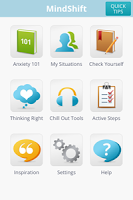 3. Mindshift–This app is specifically designed for those struggling with anxiety. Although not as highly rated as the above apps, my experience is that counselors love what this app does for their clients as a tool for managing and working through anxiety. The app includes a section on situations that trigger anxiety and how to have healing, as well as some great “chill out” tools and Twitter-worthy inspirational quotes.
3. Mindshift–This app is specifically designed for those struggling with anxiety. Although not as highly rated as the above apps, my experience is that counselors love what this app does for their clients as a tool for managing and working through anxiety. The app includes a section on situations that trigger anxiety and how to have healing, as well as some great “chill out” tools and Twitter-worthy inspirational quotes.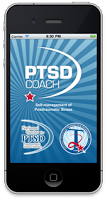 4. PTSD Coach–This is a great app that was developed by the Department of Veteran Affairs National Center for PTSD. Although originally intended for use by vets with PTSD, a quick read through the reviews shows that many civilians have been helped by this app as well.
4. PTSD Coach–This is a great app that was developed by the Department of Veteran Affairs National Center for PTSD. Although originally intended for use by vets with PTSD, a quick read through the reviews shows that many civilians have been helped by this app as well. 5. Optimism–This is a 4 star rated app that helps users with self-tracking as a tool for coping with mental health issues such as anxiety, depression, bipolar disorder and PTSD. The app allows users to create a custom wellness plan and is particularly useful when the user is working with a mental health professional.
5. Optimism–This is a 4 star rated app that helps users with self-tracking as a tool for coping with mental health issues such as anxiety, depression, bipolar disorder and PTSD. The app allows users to create a custom wellness plan and is particularly useful when the user is working with a mental health professional.
